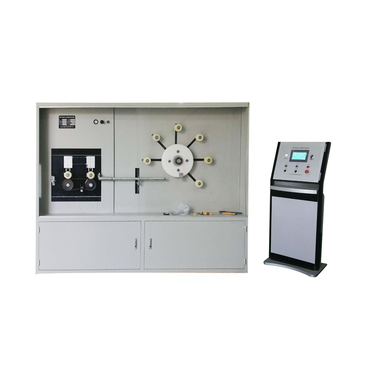Wire Repeated Bending Test Apparatus for Evaluating Material Durability and Performance
The Importance of Wire Repeated Bending Test Machines
In the realm of material testing, particularly with metals and alloys, the need for precision and reliability is paramount. One of the crucial tests conducted to evaluate the fatigue and durability of wires is the repeated bending test. To conduct this test effectively, a specialized apparatus known as the wire repeated bending test machine is vital. This machine not only simulates real-world conditions but also provides comprehensive data that helps engineers and manufacturers in designing safer and more robust products.
Understanding the Wire Repeated Bending Test
The wire repeated bending test assesses how a wire can withstand repeated mechanical stress without breaking or failing. This is especially relevant in applications where wires are subjected to continuous movement, bending, or twisting, such as in the automotive, aerospace, and electronics industries. Over time, materials can develop micro-cracks or fatigue from consistent bending, which can lead to catastrophic failures if not appropriately addressed.
The test involves bending a wire back and forth at a specified angle and frequency until failure occurs. The machine records essential parameters such as the number of cycles to failure, the bending angle, and the maximum load applied during the test. This data is crucial for understanding the mechanical properties of the wire material and informing subsequent design choices.
Features of Wire Repeated Bending Test Machines
A modern wire repeated bending test machine is equipped with advanced technology to ensure accurate and reliable results. Some of the defining features of these machines include
1. Automated Control Systems Many machines now come with automated systems that allow for precise control of the bending angle, speed, and number of cycles. This automation reduces user error and ensures that tests can be replicated with high fidelity.
wire repeated bending test machine

2. Data Acquisition Systems The integration of sophisticated data acquisition systems allows for comprehensive monitoring of the test parameters. These systems can collect and analyze data in real-time, aiding engineers in identifying patterns and anomalies.
3. Versatility Wire bending test machines can accommodate various wire sizes and materials. This versatility ensures that manufacturers can test multiple products with a single machine, making it a cost-effective solution for quality control.
4. User-Friendly Interfaces With the increasing complexity of tests, modern machines feature intuitive user interfaces that allow operators to set up tests easily, monitor processes, and generate reports with minimal training.
Applications and Benefits
The applications of wire repeated bending test machines extend across numerous industries. In the automotive sector, for instance, these machines are essential for testing wires used in brake systems and electrical connections. In the electronics industry, they help ensure the reliability of wire connections in devices subjected to vibrations and frequent movements.
The primary benefits of using these machines include improved product safety, enhanced longevity of wire products, and compliance with industry standards. By rigorously testing products before they reach consumers, manufacturers can significantly reduce the risk of failure and the associated costs of recalls and warranty claims.
Conclusion
In conclusion, the wire repeated bending test machine is an invaluable tool in the field of material testing. It provides a means to assess and ensure the durability of wires under conditions that mimic real-world applications. Through automation, data acquisition, and versatility, these machines not only enhance the reliability of wire products but also pave the way for innovations in design and engineering. As industries continue to demand higher standards of safety and reliability, the importance of testing equipment like the wire repeated bending test machine will only grow.
-
Why the Conductor Resistance Constant Temperature Measurement Machine Redefines Precision
NewsJun.20,2025
-
Reliable Testing Starts Here: Why the High Insulation Resistance Measuring Instrument Is a Must-Have
NewsJun.20,2025
-
Flexible Cable Flexing Test Equipment: The Precision Standard for Cable Durability and Performance Testing
NewsJun.20,2025
-
Digital Measurement Projector: Precision Visualization for Modern Manufacturing
NewsJun.20,2025
-
Computer Control Electronic Tensile Tester: Precision and Power for the Modern Metal Industry
NewsJun.20,2025
-
Cable Spark Tester: Your Ultimate Insulation Assurance for Wire and Cable Testing
NewsJun.20,2025
 Copyright © 2025 Hebei Fangyuan Instrument & Equipment Co.,Ltd. All Rights Reserved. Sitemap | Privacy Policy
Copyright © 2025 Hebei Fangyuan Instrument & Equipment Co.,Ltd. All Rights Reserved. Sitemap | Privacy Policy
